Friday, April 5th was a
very full day. We walked about 5 miles with our
tour guide, Ennio. We started off at 9 a.m. with an in-depth tour of the
Colosseum. We toured 2 levels of the Colosseum
and saw the original marble
and columns as well as the restored parts. We learned quite a few facts
such as the gladiators were not killed during fights very often.
They were the star of the show. So they were fed and treated well.
Gladiators could earn their freedom if they lived long enough,
usually into their 30s. From the Colosseum we walked over, up, and
through Palatine Hill and the Forum, before heading off to lunch at
a small neighborhood Italian restaurant a few blocks from the
Vatican.
History: Colosseum
The Colosseum is an oval amphitheatre in the
centre of the city of Rome, Italy. Built of travertine, tuff,
and brick-faced concrete, it is the largest amphitheatre ever
built. The Colosseum is situated just east of the Roman Forum.
Construction began under the emperor Vespasian in AD 72 and was
completed in AD 80 under his successor and heir, Titus. Further
modifications were made during the reign of Domitian (81–96).
These three emperors are known as the Flavian dynasty, and the
amphitheatre was named in Latin for its association with their
family name (Flavius).
The Colosseum could hold, it is estimated,
between 50,000 and 80,000 spectators, having an average audience
of some 65,000; it was used for gladiatorial contests and public
spectacles such as mock sea battles (for only a short time as
the hypogeum was soon filled in with mechanisms to support the
other activities), animal hunts, executions, re-enactments of
famous battles, and dramas based on Classical mythology. The
building ceased to be used for entertainment in the early
medieval era. It was later reused for such purposes as housing,
workshops, quarters for a religious order, a fortress, a quarry,
and a Christian shrineh
Although partially ruined because of damage caused by
earthquakes and stone-robbers, the Colosseum is still an iconic
symbol of Imperial Rome and is listed as one of the
New7Wonders
of the World. It is one of Rome's most popular tourist
attractions and also has links to the Roman Catholic Church, as
each Good Friday the Pope leads a torchlit "Way of the Cross"
procession that starts in the area around the Colosseum. In
2018, it was the most popular tourist attraction in the world,
with 7.4 million visitors.
The Colosseum is also depicted on the Italian version of the
five-cent euro coin.
|
|
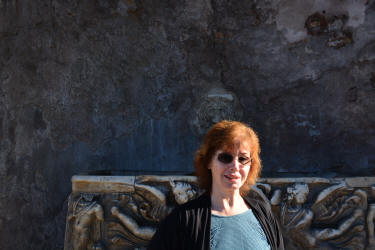
|
|
Carol at the fountain across from the Coloseum
|
|
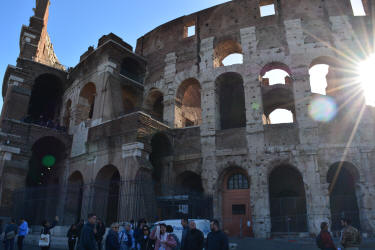
|
|
The Colosseum
|
|
|
|
|
|
|
|
|
|
|
|
|
|
|
|
|
|
|
|
|
|
|
|
|
|
|
|
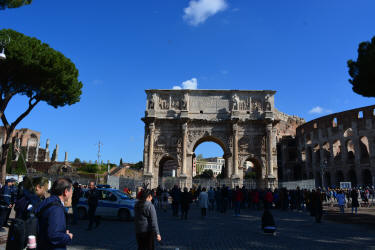
|
|
The Arch of Constantine, located between the Colosseum and Palatine Hill.
It was erected by the Roman Senate to commemorate Constantine 1's victory over Maxentius at the Battle of Milvian Bridge in 312. The arch spans the way taken by the emperors when they entered the city in triumph.
|
|
|
|
|
|
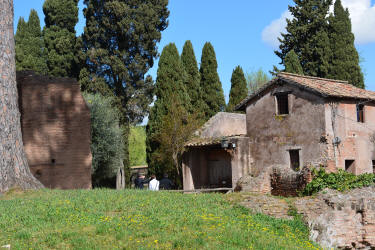
|
|
Palatine Hill
|
|
|
|
|
|
|
|
|
|
|
|
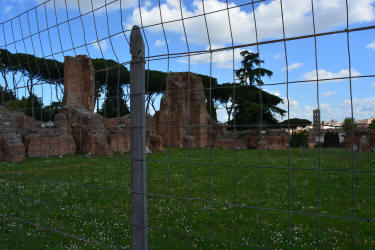
|
|
Archaeological dig
|
|
|
|
|
|
|
|
|
|
|
|
|
|
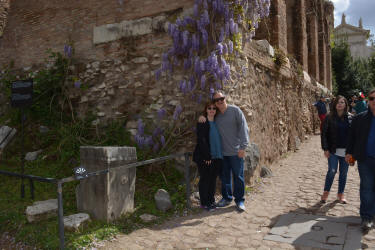
|
|
On the way to The Forum
|
|
|
|
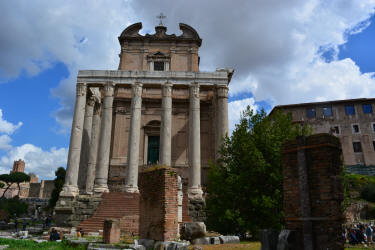
|
|
The Forum
|
|
|
|
|
|
|
|
|
|
|
|
|